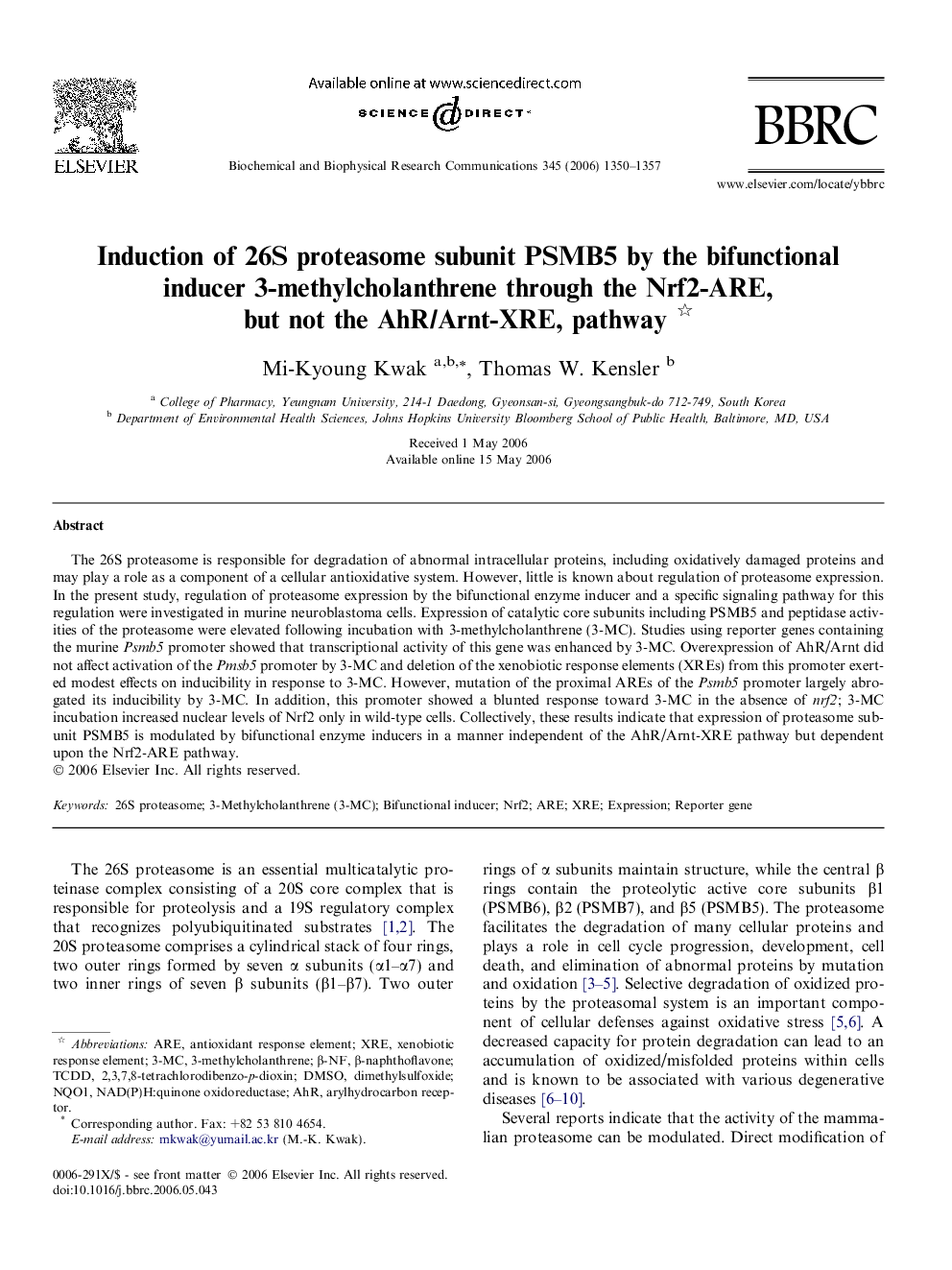| Article ID | Journal | Published Year | Pages | File Type |
|---|---|---|---|---|
| 1939772 | Biochemical and Biophysical Research Communications | 2006 | 8 Pages |
The 26S proteasome is responsible for degradation of abnormal intracellular proteins, including oxidatively damaged proteins and may play a role as a component of a cellular antioxidative system. However, little is known about regulation of proteasome expression. In the present study, regulation of proteasome expression by the bifunctional enzyme inducer and a specific signaling pathway for this regulation were investigated in murine neuroblastoma cells. Expression of catalytic core subunits including PSMB5 and peptidase activities of the proteasome were elevated following incubation with 3-methylcholanthrene (3-MC). Studies using reporter genes containing the murine Psmb5 promoter showed that transcriptional activity of this gene was enhanced by 3-MC. Overexpression of AhR/Arnt did not affect activation of the Pmsb5 promoter by 3-MC and deletion of the xenobiotic response elements (XREs) from this promoter exerted modest effects on inducibility in response to 3-MC. However, mutation of the proximal AREs of the Psmb5 promoter largely abrogated its inducibility by 3-MC. In addition, this promoter showed a blunted response toward 3-MC in the absence of nrf2; 3-MC incubation increased nuclear levels of Nrf2 only in wild-type cells. Collectively, these results indicate that expression of proteasome subunit PSMB5 is modulated by bifunctional enzyme inducers in a manner independent of the AhR/Arnt-XRE pathway but dependent upon the Nrf2-ARE pathway.
